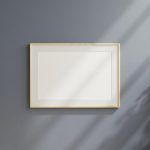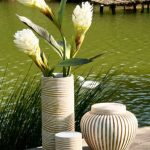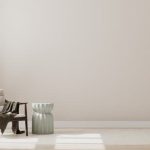Are you looking to bring that timeless, retro feel to your home? Look no further.
In this article, we’ll explore how to decorate a mid century home, capturing the essence of an era known for its sleek lines, organic forms, and minimalist shapes.
Whether you’re a mid century enthusiast or simply drawn to the clean, classic look of this style, we’ve got you covered with tips on understanding the aesthetic, choosing the right furniture, color schemes and patterns, incorporating art and accessories, lighting and textures, creating functional spaces, maintaining authenticity, and where to shop for authentic pieces.
Mid century home decor has seen a resurgence in popularity in recent years. Characterized by its focus on simplicity and functionality while embracing bold colors and a variety of materials like wood, metal, and plastic – it’s no wonder designers and homeowners alike are drawn to its enduring appeal. But what exactly defines the mid century aesthetic? Join us as we delve into what makes this style so iconic.
When it comes to decorating a mid century home, furniture plays a crucial role in bringing the look together. From eye-catching lounge chairs to sleek sideboards and statement-making coffee tables – we’ll guide you through choosing the right pieces that capture the essence of mid century design.
And don’t worry – we’ll also discuss how to incorporate modern comforts without compromising the authenticity of your space. Stay tuned as we dive into everything you need to know about bringing mid century charm into your home.
Understanding the Mid Century Aesthetic
The mid-century aesthetic is characterized by sleek lines, organic shapes, and minimalist design. It emerged in the mid-20th century and has since become a popular choice for home decor. Understanding the key elements of the mid-century aesthetic is crucial when decorating a home in this style. Here are some essential aspects to consider:
- Minimalist Design: Mid-century design embraces the concept of “less is more,” with clean lines and uncluttered spaces being key principles.
- Organic Shapes: Furniture and decor in a mid-century home often feature organic, geometric shapes inspired by nature, such as curves, arcs, and tapered legs.
- Mix of Materials: Mid-century style incorporates a variety of materials, including wood, metal, and plastic, often used in combination to create visual interest.
When decorating a mid-century home, it’s important to pay attention to these key elements to capture the essence of the aesthetic. By incorporating minimalist design, organic shapes, and a mix of materials into your decor choices, you can create an authentic mid-century look in your home.
In addition to the design principles mentioned above, color also plays an essential role in capturing the mid-century aesthetic. Bold colors such as orange, mustard yellow, and teal are often used alongside neutral tones like white, grey, and brown to create a vibrant yet balanced color scheme that reflects the era’s optimism about the future.
When selecting colors for your mid-century home decor, consider using these bold hues sparingly to make a statement while maintaining harmony within the space.
Choosing the Right Furniture for a Mid Century Home
When it comes to decorating a mid century home, the right furniture can make all the difference in capturing the essence of this era. Here are some key tips for choosing the right furniture for a mid century home:
1. Embrace organic shapes and clean lines: Look for furniture pieces with sleek, minimalist designs and organic shapes. Classic mid century furniture often features tapered legs, smooth curves, and geometric forms.
2. Opt for quality materials: Mid century furniture is known for its use of high-quality materials such as teak, walnut, and rosewood. When selecting furniture pieces for your mid century home, prioritize items made from these timeless materials to ensure authenticity.
3. Mix and match old and new: Don’t be afraid to mix vintage mid century pieces with contemporary ones. This approach adds visual interest and allows you to personalize your space while still maintaining the overall mid century aesthetic.
Remember that choosing the right furniture is crucial in achieving an authentic mid century look in your home. By focusing on organic shapes, quality materials, and mixing old with new, you can create a cohesive and stylish living space that embodies the essence of mid century design.
Color Scheme and Patterns for Mid Century Decor
When it comes to decorating a mid-century home, selecting the right color scheme and patterns is essential to capturing the authentic aesthetic of this design era. Mid century decor often embraces bold and vibrant colors, such as mustard yellow, avocado green, and tangerine, which can be incorporated into various elements of the home, from furniture to wall art.
When choosing a color scheme for your mid-century home, consider opting for contrasting colors that make a statement and add visual interest to the space.
In addition to bold colors, incorporating geometric patterns is also a key aspect of mid century decor. Look for textiles with abstract shapes or retro-inspired patterns to use in throw pillows, rugs, and curtains. These patterns add a playful and eye-catching element to the overall design of the home. Additionally, consider using wallpaper with geometric prints or bold stripes to create a focal point in a room without overwhelming the space.
When deciding on a color scheme and patterns for your mid century home, it’s important to find a balance between incorporating these bold elements while also ensuring that they complement each other cohesively. By embracing the vibrant colors and eye-catching patterns characteristic of mid-century design, you can create an inviting and visually stimulating space that captures the essence of this iconic era in interior design.
Incorporating Mid Century Art and Accessories
Mid century home decor is not complete without the inclusion of mid century art and accessories. These elements are essential in capturing the essence of the mid century aesthetic and tying the entire look together. When it comes to incorporating art and accessories into a mid century home, it’s important to understand the key characteristics of this design style.
One of the most iconic features of mid century art is its abstract and geometric forms, as well as its use of bold colors. When selecting art pieces for a mid century home, look for abstract paintings, graphic prints, and sculptures with clean lines and vibrant hues. Additionally, consider incorporating accessories such as ceramics, glassware, and textiles that feature similar geometric patterns and sleek, minimalist designs.
In addition to art and accessories, mid century design also embraces nature-inspired elements. Consider adding indoor plants or botanical prints to bring a touch of nature into your space. Furthermore, vintage items such as record players, atomic clocks, and retro telephones can also contribute to the overall nostalgic appeal of a mid century home. By carefully curating art and accessories that embody these design principles, you can ensure that your mid century home exudes an authentic and cohesive aesthetic.
Lighting and Textures in Mid Century Home Decor
Importance of Lighting
Lighting is a crucial element in mid century home decor. The right lighting can create the perfect ambiance and highlight the unique features of mid century design. Look for lighting fixtures with clean lines, organic shapes, and brass or wood finishes to complement your mid century aesthetic. Consider incorporating floor lamps, pendant lights, and sconces to create layers of light in different parts of your home.
Embracing Texture
Texture plays a significant role in defining the look and feel of a mid century home. To add texture to your space, consider using materials such as leather, velvet, teak wood, and brass. Incorporate textured accent pillows, rugs with geometric patterns, and wooden furniture to bring warmth and depth to your interiors. Additionally, you can introduce natural elements like plants and stone accents to further enhance the tactile appeal of your mid century decor.
Making Natural Light a Priority
One of the signature features of mid century architecture is its emphasis on connecting indoor spaces with the outdoors through large windows and open floor plans. To stay true to this aspect of mid century design, prioritize natural light in your home. Opt for sheer curtains or blinds that allow sunlight to enter while maintaining privacy. Maximize natural light by keeping windows unobstructed and using mirrors strategically to reflect light around the room.
Incorporating appropriate lighting fixtures and tactile textures into your mid century home decor will help you achieve an authentic and visually appealing space that pays homage to this iconic design period. By focusing on these elements, you can elevate the overall aesthetic of your home while staying true to the principles of mid century design.
Creating Functional Spaces in a Mid Century Home
When decorating a mid century home, it is important to create functional spaces that still maintain the clean lines and minimalist aesthetic of this design style. One key aspect of mid century home decor is the open floor plan, which allows for seamless transitions between different areas of the home. To achieve this, consider using furniture with slim profiles and legs to create a sense of openness and flow within each space.
In a mid century home, functional spaces should also prioritize both form and function. This means incorporating pieces of furniture that are not only visually appealing, but also serve a practical purpose. For example, consider choosing storage solutions that blend seamlessly with the overall aesthetic of the home, such as a sleek sideboard or a wall-mounted shelving unit. Additionally, look for multipurpose furniture pieces that can help maximize space in smaller mid century homes.
Another important aspect of creating functional spaces in a mid century home is to carefully consider traffic flow and usability within each area. Avoid cluttering up spaces with unnecessary furniture or decor items, and instead focus on creating an environment that is both visually striking and easy to navigate.
By carefully planning out the layout of each room and considering how each space will be used on a daily basis, you can ensure that your mid century home remains stylish while still meeting the practical needs of everyday living.
Maintaining the Authenticity of Mid Century Design
Maintaining the authenticity of mid-century design is crucial for achieving a genuine and cohesive look in your home. One key aspect of this style is to focus on using original or high-quality reproduction furniture and decor pieces. Look for items that feature clean lines, geometric shapes, and organic forms, which are characteristic of mid-century design. It’s important to avoid mass-produced, contemporary items that may not fit the era’s aesthetic.
In addition to furniture, paying attention to details such as color schemes, patterns, and materials will help maintain the authenticity of mid-century design. Mid-century color palettes typically include earthy tones like olive green, mustard yellow, and warm browns, along with pops of vibrant colors like turquoise or red.
When it comes to patterns, think bold geometric prints or abstract patterns inspired by nature. Opt for materials such as teak, walnut, brass, and fiberglass for a truly authentic mid-century feel.
Another way to maintain authenticity is by incorporating mid-century art and accessories into your home decor. Look for artwork from renowned artists of the era or pieces that feature abstract expressionism or pop art styles. Additionally, consider adding accessories like ceramic table lamps, minimalist sculptures, and textiles with retro-inspired designs to enhance the vintage feel of your space.
In summary, maintaining the authenticity of mid-century design involves focusing on original or high-quality reproduction furniture and decor pieces that embody the distinctive characteristics of this style. Paying attention to details such as color schemes, patterns, materials, and incorporating mid-century art and accessories will contribute to creating an authentic mid-century home that exudes timeless appeal.
| Aspect | Details |
|---|---|
| Furniture | Look for original or high-quality reproduction items with clean lines and organic forms |
| Color Schemes | Earth tones with pops of vibrant colors; avoid contemporary color palettes |
| Miscellaneous Details | Incorporate art and accessories from the era; pay attention to materials used in decor pieces |
Where to Shop for Authentic Mid Century Decor Pieces
When it comes to decorating a mid century home, one of the most important aspects is finding authentic decor pieces that embody the design aesthetic of that era. There are several options for where to shop for these items, both in-person and online.
One popular option is to visit antique stores and vintage shops, where you can often find original mid century furniture, lighting, and accessories. These establishments often have one-of-a-kind pieces that can add character and authenticity to your home.
Another great option for finding authentic mid century decor pieces is to attend estate sales and auctions. Estate sales are a treasure trove of unique items from the mid century era, as they often feature entire homes full of furniture and accessories from that time period. Similarly, auctions can be a great way to score authentic mid century pieces at competitive prices. Keep an eye on local auction houses or online auction sites for upcoming events featuring mid century items.
For those who prefer the convenience of online shopping, there are also several websites that specialize in mid century decor. These online retailers offer a wide range of authentic pieces, from furniture to artwork to decorative objects. When shopping online for mid century decor, be sure to do thorough research on the seller’s authenticity and return policies to ensure you are getting genuine items that meet your expectations for quality and condition.
Final Tips and Tricks for Decorating a Mid Century Home
In conclusion, decorating a mid century home requires a keen understanding and appreciation of the aesthetic of that era. It’s important to choose furniture, colors, patterns, art, and accessories that reflect the clean lines, organic curves, and functional design elements characteristic of mid century decor. When it comes to lighting and textures, focus on incorporating elements that create a warm and inviting atmosphere while still maintaining the sleek and modern feel of mid century design.
To maintain the authenticity of mid century design in your home, consider seeking out authentic decor pieces from reputable sources. Whether it’s vintage shops, online marketplaces, or specialized retailers, there are many options for finding genuine mid century furniture and accessories. By investing in quality pieces, you can ensure that your home truly captures the spirit of this iconic design era.
Finally, when decorating a mid century home, don’t be afraid to put your own spin on things. While staying true to the core principles of mid century design is essential, adding personal touches and unique elements can make your space feel more inviting and reflective of your own style. With these final tips and tricks in mind, you’ll be well-equipped to create a stunning mid century home that feels both timeless and contemporary.
Frequently Asked Questions
How Can I Make My House Look Mid-Century?
You can make your house look mid-century by incorporating iconic mid-century furniture pieces, such as Eames chairs or Noguchi tables, into your decor. Look for clean lines, organic shapes, and a mix of materials like wood, metal, and plastic. Choose a color palette that reflects the era, with shades like mustard yellow, olive green, and burnt orange.
What Is Mid Century Style Decor?
Mid-century style decor is characterized by a timeless yet modern aesthetic that emerged in the mid-20th century. It often features sleek lines, minimalist silhouettes, and a mix of materials like wood, metal, and glass. The style emphasizes functionality and simplicity while incorporating pops of bold colors and graphic patterns.
What Style Pairs Well With Mid-Century Modern?
Mid-century modern pairs well with a variety of styles, including contemporary, minimalist, and Scandinavian design. These styles share similar principles of clean lines, functional design, and a focus on natural materials.
Mid-century modern furniture and decor can also add a unique touch to more traditional or eclectic spaces by balancing out the overall look with its sleek and timeless appeal.

I’m thrilled to be your companion on this exciting journey through the world of home decor and design. With a passion for turning houses into homes and a keen eye for the finer details, I’m here to help you transform your living spaces into beautiful, functional, and meaningful havens.





